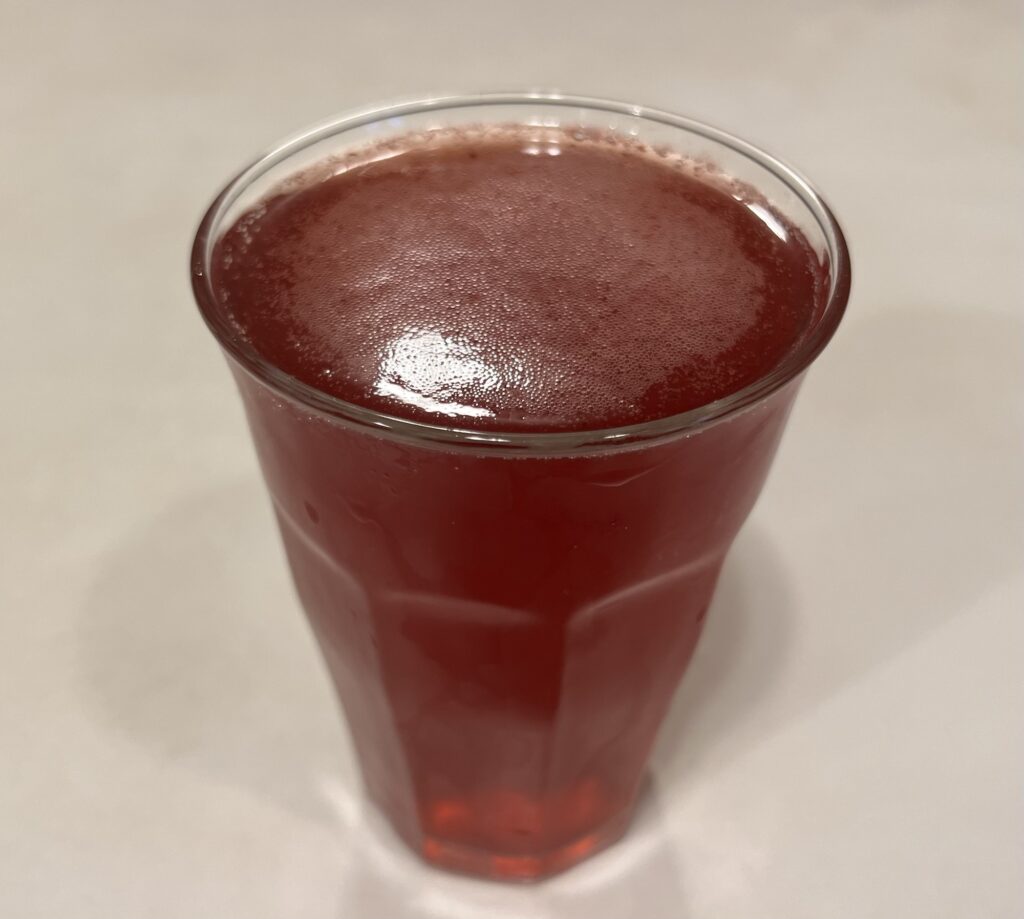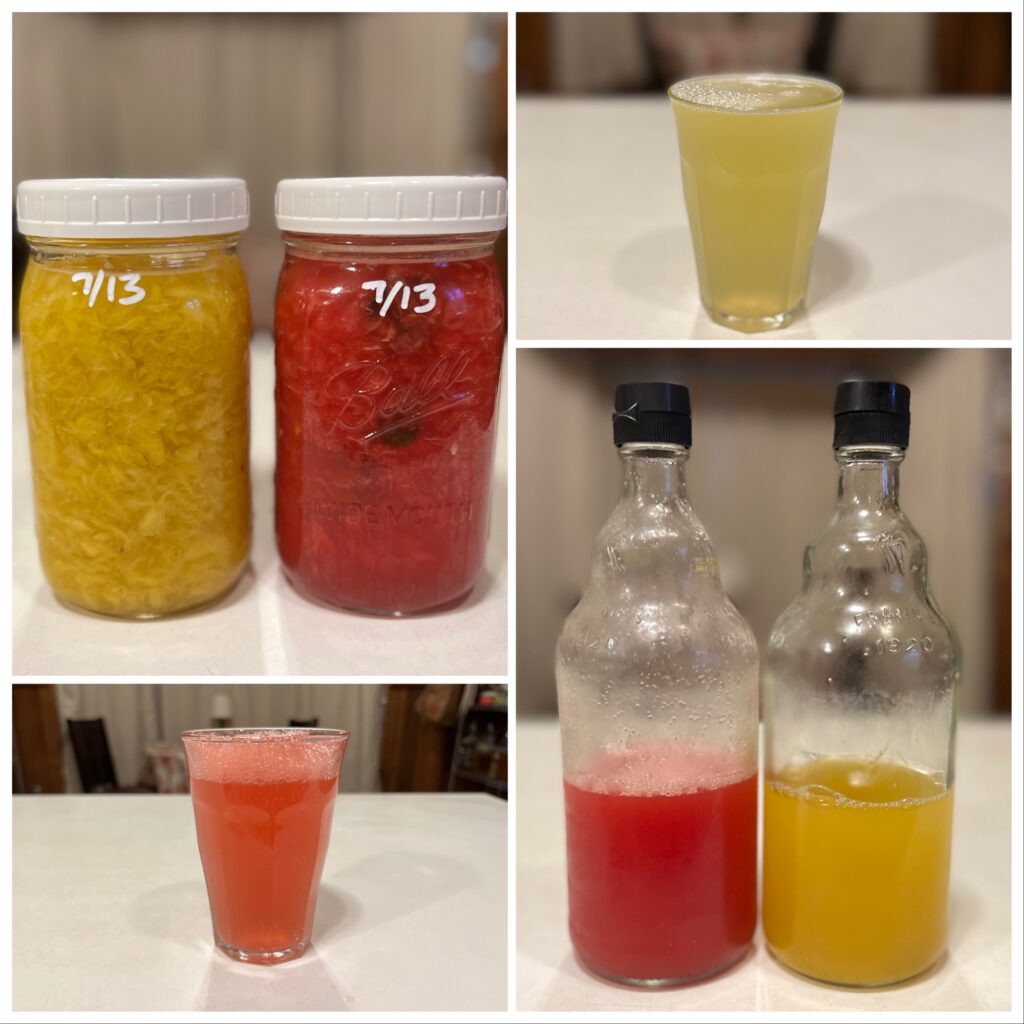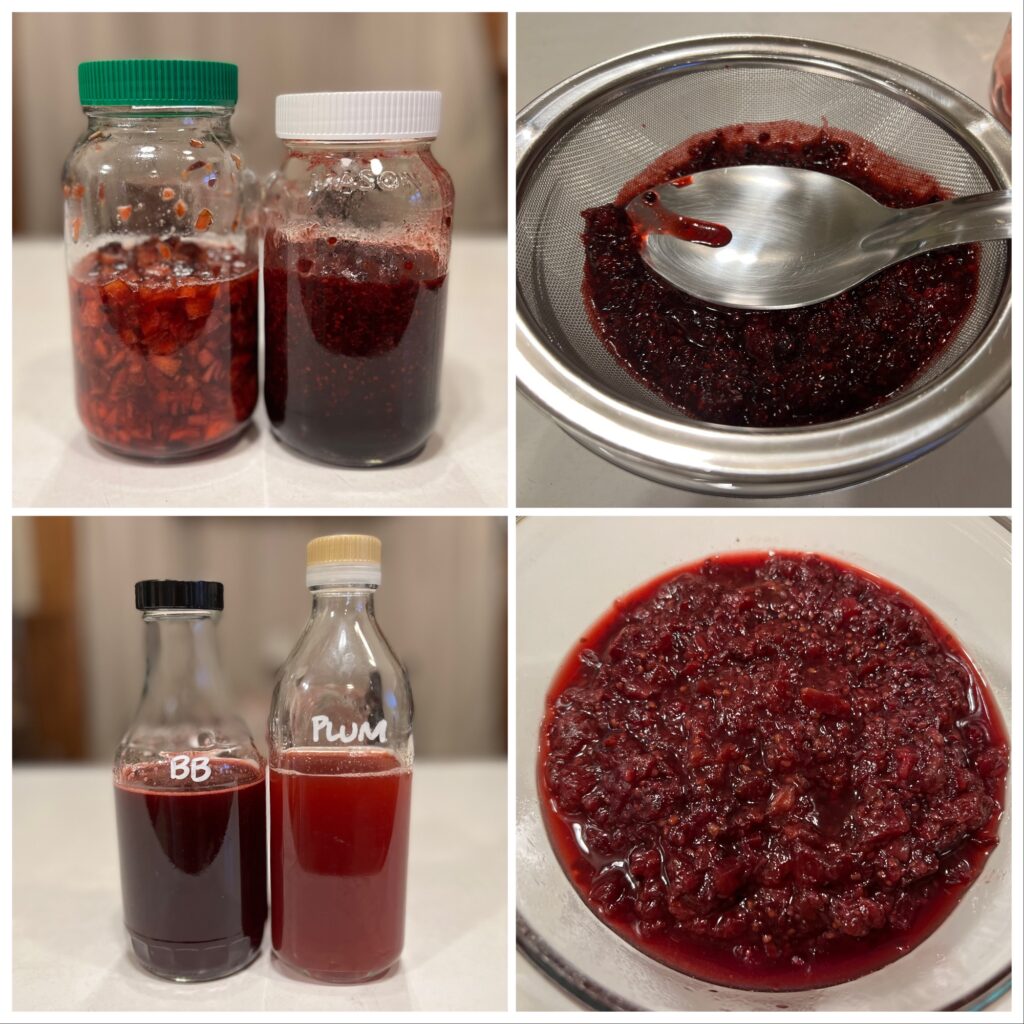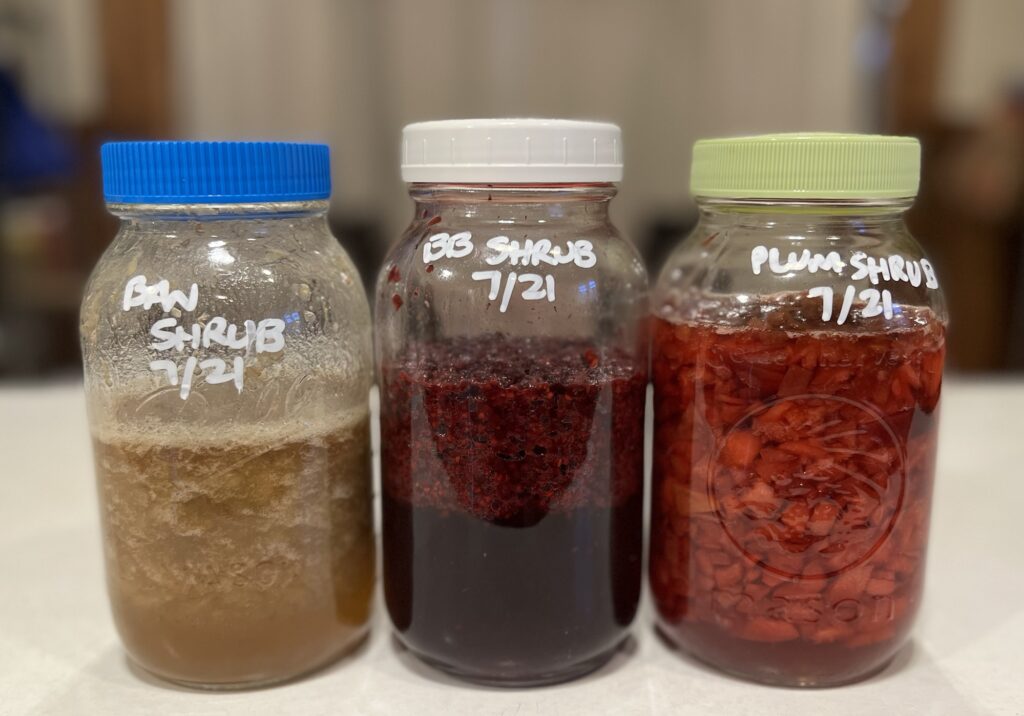
Hot, sticky days seem to go hand in hand with cold, refreshing beverages. Though we keep delicious probiotic drinks like water kefir and kombucha on hand, we recently decided to expand our repertoire to include shrubs – AKA “drinking vinegar”. A combination of fresh fruit, raw vinegar, and sweetener, rounded out with the effervescence of sparkling water…it’s summer in a glass!
Shrubs are reputed to have been around since colonial times and are thought to have been invented as a means of preserving fruit in a period that predates refrigeration. Whoever had the bright idea of creating a fruity syrup with an eye-opening balance of acid and sweet and adding water to make a refreshing drink was truly inspired. Plus, this can be made as a fermented beverage. Need more reasons to start making vinegar? Check out this post!
There are as many recipes for making a “basic” shrub (syrup base) as there are for making variations on that theme, but I find that the base recipe generally falls into one of two camps: hot or cold-processed. The hot-processed shrubs are typically similar to jam-making, where fruit is cooked down with sweetener, then vinegar is added. Sometimes, the vinegar is also cooked with the fruit and sweetener – clearly, this would kill any probiotics in the nascent shrub, so I opted to stick with the cold-processed method. to preserve the fermented goodness.
In the cold-processed method, fruit and sweetener is mixed together and a process called maceration draws the liquid from the fruit. This is the same process that occur when making Mugolio. In some recipes, the maceration occurs, the sweetened syrup is strained off, and then the vinegar is added. In others, the vinegar is added right in the beginning and helps facilitate fermentation.
Round 1: first shrub syrups I made were watermelon-mint and pineapple, using the cold-processed method. I cut back the sugar because the idea of using a cup of sugar made my teeth hurt, so I cut back both the sugar and (apple cider) vinegar to 1/2 cup each. The recipe indicated that the shrub was ready almost immediately to use. We added about 2 ounces of syrup to a tall glass and topped it up with sparkling water (made in our SodaStream Terra – a carefully considered purchase). The shrubs were tasty, but there was still a pretty prominent vinegar tang to the drinks. As the syrup spent more time in the refrigerator, the flavors mellowed and they became more fruit-forward. Clearly, time was important to the finished product.

Round 2: different approach and different fruit. I decided to try the hot processing method with fresh-picked wild blackberry (why do those brambles require a blood offering, pricking fingers and scratching arms?) and (commercially grown) plum. I cooked each separately with 1/2 cup sugar, then added 1/2 cup (apple cider) vinegar once the syrup had cooled. This approach allows the raw vinegar to remain alive, so the probiotics are preserved.

In addition, once I had squeezed every possible drop of juice from the cooked fruit, I combined the leftovers (already sweetened) in a pan and let it cook on low for about a half hour, creating a compote. We enjoyed it on homemade Belgian waffles, and it would doubtless be tasty on ice cream, too.

Round 3: this one is currently in progress. I made banana, blackberry, and plum (separately). This was a cold-process, with the chopped or mashed fruit being combined with the sugar (again, half the amount) and vinegar, though I used kombucha vinegar and the full 1 cup this time. If you’re curious about why I reduce the amount of sugar, it’s because I don’t think it’s necessary to facilitate a good ferment, given the vinegar starter and the natural sugars, and because I use stevia in the finished drinks to increase the sweetness, as needed. This recipe is a bit different, too, in that the maceration/fermentation process is allowed to continue for a longer period of time – the recipe’s author indicates that it could continue for as long as a year. I think I’ll be happy with about a week or two of fermentation and then I’ll want to try it.

Despite the fact that we have plenty of cool, refreshing live beverages in our arsenal already, this is a worthy addition. The combination of juicy, sweet, sour, and fizzy tickles the taste buds and quenches the thirst in a unique way, while still preserving the nutritional benefits of raw vinegar. This shrub project has also prompted me to consider making other types of raw vinegar (like pineapple) to use in these drinks, too. For now, I have plentiful kombucha vinegar – some having aged for several years – and raw apple cider vinegar.
Though I have yet to make an adult beverage using the shrub syrups, I can easily see how gin, vodka, rum, or bourbon, for example, would marry well with these flavors: pineapple and rum, banana and bourbon, plum and vodka, watermelon-mint and gin? So many mouthwatering possibilities!

Summer also means lots of fruit in season, so take full advantage of its availability – including foraging responsibly – and make some shrubs. You’ll see vinegar in a whole new light!
Want to try making shrubs for yourself? Mine are loosely based on these recipes: Basic Shrub Recipe, Any Berry Shrub, Drinking Shrubs, Summer Shrubs.
